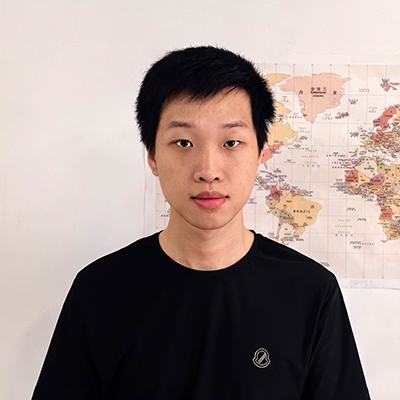Short Introduction to Guilin Local Culture: History, Nation, Diet, Clothing...
Brief Introduction of Guilin Culture
Guilin, situated in the Guangxi Zhuang Autonomous Region of China, is a historic and cultural city. Established as early as 214 BC, this city boasts a history spanning over two millennia. Nestled at the confluence of the Li River and the Gui River, Guilin is surrounded by picturesque mountains, earning it the reputation as one of the most beautiful places in China.
History
During the Xia, Shang, and Zhou dynasties, the area was inhabited by the Baiyue people.
In the Spring and Autumn period and the Warring States period, Lingnan was referred to as the land of the Baiyue, with Guilin being part of it.
During the Qin and Han dynasties, in 214 BC, the Qin Dynasty conquered the Baiyue people and established Guilin Prefecture, Nanhai Prefecture and Xiang Prefecture in Lingnan.
During the Sui and Tang dynasties, it was under the jurisdiction of Lingnan Guizhou General's Office, in which Guizhou refers to Guilin.
During the Ming Dynasty, Zhu Shouqian, the nephew of Zhu Yuanzhang, was conferred the title of Jingjiang Prince, ruling over Guilin and building the Jingjiang Prince's Mansion.
During the Qing Dynasty, Guangxi Examination compound, built within the former Jingjiang Prince Palace, witnessed the glorious history of ancient education in Guangxi. Even today, plaques such as "First Place of Three Governmental Exam", "First Place in the Imperial Exam" and "Second Place in the Imperial Exam" are still embedded on the palace gates of the prince's city.
During the period of the Republic of China, Guilin had been the capital of Guangxi Province for a long time.
On November 22nd, 1949, Guilin was liberated and became a prefecture-level city of Guangxi Province.
The name "Guilin" originated from the Qin Dynasty, as Guilin Prefecture was famous for its abundant production of fragrant osmanthus which in Chinese is “Gui”.
Nation
Guilin is a city with a rich tapestry of ethnic diversity, home to 28 minority groups such as the Zhuang, Hui, Miao, Yao, and Dong, who make up about 8.5‰ of the city's total population. These minority groups, including the Zhuang, Miao, Yao, and Dong, maintain their ancient, unique, and colorful customs, which are highly attractive to both domestic and international tourists. Notable festivals include the Zhuang's "San Yue San (Lunar 3rd March)" Festival, the Yao's Panwang Festival and Danu Festivals, the Miao's Lusheng Festival and Drum-Tug Festivals, and the Dong's Huapao Festival and Winter Festivals. Despite living within the Chinese cultural sphere, these diverse groups preserve their distinct traditions, including clothing, food, festivals, religious beliefs, and even languages and scripts.
Diet Style
Guilin's cuisine is primarily characterized by its spicy flavors, yet it also incorporates a variety of other tastes. Due to its unique geographical location, Guilin's food culture blends influences from Hunan and Guizhou, leading to a rich and diverse culinary culture. In Guilin, you can savor flavorful spicy dishes like rice noodles, shelduck in vinegar blood, and stuffed river snails. Additionally, local delicacies such as oil tea, Lipu pork with taro, and Yangshuo beer fish are must-tries. Guilin also offers delightful snacks, including water chestnut steamed cake and osmanthus rice dumplings, which leave a lasting impression. Overall, Guilin's cuisine, dominated by its aromatic spiciness and varied flavors, is sure to captivate and enchant food lovers.
Cultural Heritage
Guilin is home to several significant cultural heritage sites. The Zengpiyan Cave site is a notable prehistoric archaeological site. The Lingqu Canal in Xing'an is one of China's three major ancient water conservancy projects, alongside the Grand Canal and Dujiangyan. The Jingjiang Prince's Palace and Tombs represent the largest and best-preserved Ming Dynasty princely estates in China. Gongcheng Confucian Temple is one of the four major Confucian temples in China. The Guihai Forest of Stele is renowned for its extensive collection of historical stone carvings. Quanzhou's Xiangshan Temple, known as the "First Famous Temple South of Chu", has a long history. Additionally, modern historical sites include the Eighth Route Army Guilin Office and the former residence of General Li Zongren, which are important cultural relics.
Folk Culture
Zhuang Ethnic Group
The Zhuang ethnic group is known for their distinctive brocade, Zhuang Jin, and their love for singing, such as Immortal Singer Liu Sanjie and "San Yue San" Singing Festival. Zhuang singing festival, or "Gexu" has developed many enchanting legends over time. One popular story is "Singing Competitions for Choosing a Husband". According to the tale, a beautiful daughter of an elderly Zhuang singer was highly skilled in singing mountain songs. The elderly man wished to find a talented young singer to marry his daughter. Young singers from various places flocked to compete in singing contests to win her hand, and thus, regular singing competitions were established.
Miao Ethnic Group
The Miao ethnic group is renowned for their unique crafts of embroidery and batik. The Miao New Year, similar to the Chinese Spring Festival, occurs in late December of the lunar calendar, during which families pound glutinous rice and purchase New Year goods. The Miao's religious beliefs primarily revolve around ancestor worship, with special ceremonies involving rice dumplings on lunar 2nd February and lunar 6th June. Additionally, nature worship holds significant importance within their culture.
Hui Ethnic Group
The Hui people place great importance on educating their children, encompassing both Islamic and Han culture education. The Hui communities are typically centered around mosques because of their Islamic faith. Consequently, mosques naturally become the hub of Hui society, serving not only as the center for religious activities but also as a place for discussing important matters and fostering social connections.
Yao Ethnic Group
The Yao people, who reside in mountainous areas, are famous for their herbal baths that are known for their ability to relieve pain and drive away illnesses. One of their festivals is the Beat Qigong Festival on lunar 14th May, which includes worshiping ancestors and prayers for a bountiful year. Within Longsheng County, the Yao are divided into Pan Yao, Hua Yao, and Red Yao. The Pan Yao, also known as Guoshan Yao, are named after their worship of "Panwang". The Hua Yao are named for the colorful patterns on their women's clothing. The Red Yao women's attire includes distinct types and the headwear of Red Yao women signifies their status.
Dong Ethnic Group
The Dong people are renowned for their exceptional architectural skills, exemplified by their iconic Wind and Rain Bridges and Drum Towers. Made entirely of Chinese fir wood, these structures are built with mortise and tenon joints, without a single nail, showcasing a rustic elegance. The Dong Homeland has also long been hailed as the "Land of Song and Dance", boasting dozens of traditional ethnic songs and dances.

Useful Guilin Travel Information
- 1. Guilin Travel Guide, Plan a Suitable Trip »
- 2. Best Time to Visit Guilin »
- 3. Suggested Guilin Itinerary »
- 4. Top Tourist Attractions in Guilin »
- 5. Best Things to Do in Guilin »
- 6. Hands-on Cultural Immersions »
- 7. Best Places to Visit of Guilin »
- 8. Guilin Local Food and Restaurants »
- 9. Luxury & Boutique Hotels in Guilin »
- 10. Guilin Local Culture »
- 11. Best Tailor-made Guilin Tours »
GREAT FAMILY CHINA TOUR
JULY 2024 We wanted to thank Grace at China Culture tour for organizing a great tour of China. We enjoyed our Beijing - Xian-Chengdu -Guilin -Yangshuo - Shanghai trip. Our local guides Bruce in Beijing, Susan in Xian, Jane in Chengdu, Mike in Guilin and Mary in Shanghai took care of us…read more details »
Teng Han L from SINGAPORE
Ready to Create a Unique Dream Travel?


